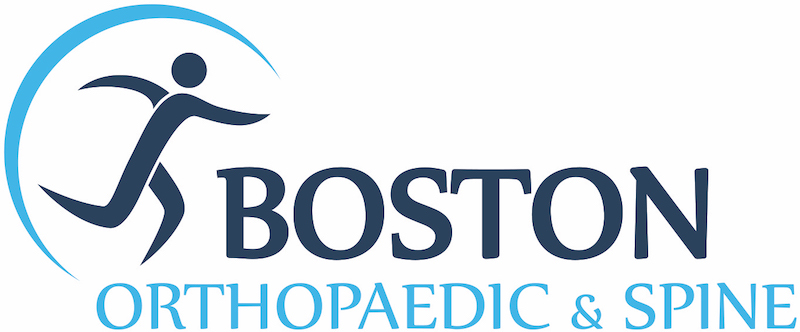The Foot and Ankle Center
Expertise in Foot and ankle Conditions & Procedures
Backround
Your feet support your whole body and provide critical support with walking and standing. When you have pain in your feet or ankles, basic activities become chores. Our team at Boston Orthopaedic & Spine has extensive experience in the diagnosis, treatment, and prevention of foot and ankle disorders caused by aging, arthritis, and trauma.
Common Foot & Ankle Conditions
There are a number of conditions that can lead to pain in the feet and ankles. Some of the most common include:
- Ankle sprains
- Plantar fasciitis
- Achilles tendonitis
- Arthritis
- Fractures
- Bunions
- Morton’s neuroma
- Flat feet
Whether your pain is new or old, we are here to help.
Treatments
Most patients do not need surgery to manage their foot and ankle pain. At Boston Orthopaedic & Spine, we find that most injuries can be successfully managed with conservative measures such as rest, anti-inflammatory medications, ice/heat, stretching, injections, and physical therapy.
When nonsurgical options fail to relieve pain and restore function, our board-certified, fellowship-trained orthopedic surgeons are highly skilled with arthroscopic and open procedures.
Common Causes of Foot and Ankle Pain
The foot and ankle are two of the most versatile and complex areas of your body. One foot alone contains 26 bones supported by a network of muscles, tendons, and ligaments. When everything is working well, you hardly give them a thought. But when a problem arises, it’s often impossible to ignore. At Boston Orthopaedic & Spine, our team of board-certified, fellowship-trained experts has the training and expertise to keep you active.
FOOT AND ANKLE ANATOMY
The ankle is a hinge-type joint that consists of a capsule containing fluid which both nourishes and lubricates the joint making motion possible between the foot and the leg. The ankle is made up of the tibia, fibula, and talus in addition to a large complex of ligaments and tendons.
The foot and ankle contain:
- 26 small bones (one-quarter of the bones in the human body).
- 33 joints.
- More than 100 muscles, tendons and ligaments.
- A large network of blood vessels, nerves, skin, and soft tissue.
These components work together to provide the body with support, balance, and mobility.
COMMON CAUSES OF FOOT AND ANKLE PAIN TREATED AT BOSTON ORTHOPAEDIC & SPINE
Arthritis
Arthritis, or osteoarthritis, is loss of cartilage within a joint. While there are many other types of arthritis, including rheumatoid, psoriatic, septic, post-traumatic, and lupus, wear and tear osteoarthritis remains by far the most common. Arthritis symptoms can include swelling, tenderness, sharp pain, stiffness, and sometimes fever and chills.
Achilles tendon injury or rupture
Achilles tendon injuries occur when the tendon connecting the calf muscle to the heel bone is overstretched, torn, or completely ruptured. Symptoms include pain above the heel and along the back of the foot (especially when pointing or flexing the foot), tenderness, swelling, bruising and stiffness. Many patients describe a sharp ‘pop’ if the Achilles tendon ruptures during sporting activities. Treatment includes rest, anti-inflammatory medications, splinting, activity modifications, and sometimes surgery.
Bone spurs
Bone spurs (also known as osteophytes) are bony projections that develop on the surface of the bone, often at joints or on the spine. Bone spurs are often the result osteoarthritis. Bone spurs often do not cause symptoms, but can cause swelling, pain, and tearing to the surrounding tissue or tendon.
Bunions
A bunion is an abnormal enlargement of the joint at the base of the big toe, characterized by a painful, bony bump. The affected toe is often curved outward, moving the bones of the feet out of alignment. Bunions may be caused by improper footwear, inherited foot structure, and foot injuries.
Bursitis
Bursitis is painful inflammation of the bursae, the fluid-filled sacs that reduce friction between bones, tendons, and muscles, caused by an injury, infection or other condition. Pain may be accompanied by swelling, tenderness or loss of movement.
Flat feet
Flat feet (also known as pes planus or fallen arches) is a condition in which the arch of the foot collapses, causing the entire sole of the foot to make contact with the ground. In the earlier stages, this is managed well with inserts and therapy.
Fractures
A fracture is a break in a bone. Broken bone symptoms include pain (intensified when the area is moved or pressure is applied), swelling, bruising, and loss of function. Fractures may also cause the area around the bone to appear distorted or deformed, especially in open fractures where the bone protrudes from the skin.
A stress fracture is a hairline crack in a bone that can worsen during activity over time. Stress fracture symptoms include pain, which increases with activity and decreases after rest, in addition to swelling and tenderness.
Hammertoe/mallet toe/claw toe
Hammertoe, claw toe, and mallet toe are deformity conditions that cause the shape of the toes to curve. Hammertoe affects the toe’s middle joint; claw toe affects the toe’s middle and end joints; mallet toe affects the toe’s end joint. These conditions are often caused by improper footwear, but can also be inherited or caused by other systemic diseases.
Heel pain & heel spurs
Heel pain is marked by discomfort when the heel bears weight. It is often caused by overuse or trauma. Heel spurs, or small, bony growths on the heel bone, can also cause pain in the heel. Treatment is often rest, activity modification, shoewear modification, and anti-inflammatory medications.
Metatarsalgia
Metatarsalgia is inflammation in the ball of the foot, just behind the toes. Symptoms include sharp, burning, or aching pain in the ball of the foot and in the toes that gets worse with activity and better with rest. Metatarsalgia is often described as the feeling of having a rock in your shoe. It can be caused by a shift in normal weight distribution, such as with heavy exercise or the development of another foot condition.
Morton’s neuroma
Morton’s neuroma is the thickening of the tissue around the nerve between the bases of the toes (usually between the third and fourth toes). Symptoms can include the feeling of a rock in your shoe, burning pain, or numbness. The exact cause of Morton’s neuroma is unclear, but may result from irritation or injury to foot nerves connecting to the toes.
Osteochondral lesions
Osteochondral lesions are tears or fractures in the cartilage that covers the bones in a joint, commonly seen in the ankle and knee. In the ankle, osteochondral lesions usually occur over the bone connecting the leg to the foot (the talus). Symptoms often include sharp pain when the ankle is in a predictable, weighted position. Treatment includes rest, anti-inflammatory medications, bracing, and sometimes surgery to repair the cartilage defect.
Plantar fasciitis
Plantar fasciitis is inflammation of the thick tissue on the bottom of the foot (called the plantar fascia), which is the tissue that connects the heel bone to the toes and creates the arch of the foot. The exact cause of plantar fasciitis is unknown, but may develop from repeated tears in the foot tissue, a result of repetitive activities, aging, or stress to the tissue. Treatment is generally nonsurgical and includes a diligent stretching program.
Turf Toe
Sesamoiditis (also known as turf toe) is inflammation of the tendons around the big toe. This often causes pain underneath the toe in the ball of the foot, and may also present swelling, bruising, and difficulty bending or straightening the big toe. Treatment includes rest, anti-inflammatory medications, shoe wear modifications, and bracing.
Tendonitis
Tendonitis is inflammation of the tendons, the tissue that connects muscle to bone. Tendonitis is caused by overuse (repetitive motion) or sudden injury. Tendonitis symptoms include pain in the tendon area, swelling, and loss of motion.
Fracture and Sprains
25,000 people sprain their ankles every day.
CAUSE & SYMPTOMS
A sprained ankle means the ligaments on the outside of the ankle have stretched or torn. Sprains can range from just a brief pain to a severe injury making it too painful to stand.
REPAIR & RECOVERY
Tell your ProSports physician how you sprained your ankle. He’ll examine your ankle, and may take X-rays to make sure no bones are broken. Your sprain may have damaged one or more of the three ligaments of the ankle. The number of injured ligaments determines the grade of the sprain: I, II or III. The higher the grade, the longer the recover time and more immobilized the ankle needs to be during recover.
For any sprain, you should follow the R.I.C.E treatment plan:
- Rest your ankle. Avoid walking on it at all.
- Ice the ankle. This keeps the swelling down.
- Compress the ankle. This immobilizes the area.
- Elevate the ankle above the heart for 48 hours.
The swelling should go down in a few days. Putting weight on the injured ankle shortly thereafter can be helpful in the healing process. Be sure to ask your ProSports physician about safe strategies for rehabilitation.
Your doctor will prescribe a rehabilitation routine to enhance the strength and flexibility of the injured ankle. It’s essential to complete the entire rehabilitation program, to return the ligaments to full strength and to lessen the chances of re-injury.
Plantar Fascitis
The foot and ankle are two of the most versatile and complex areas of your body. One foot alone contains 26 bones supported by a network of muscles, tendons, and ligaments. When everything is working well, you hardly give them a thought. But when a problem arises, it’s often impossible to ignore.
More than 11 million visits were made to physicians’ offices in 2003 because of foot and ankle problems, including more than 2 million visits for ankle sprains and strains and more than 800,000 visits for ankle fractures.* Some conditions that may affect your foot and/or ankle could be:
- A fracture and/or sprain
- Tendonitis
- Tarsal tunnel syndrome
- Plantar fasciitis (heel pain)
- Bone spurs
- Morton’s neuroma
- Bunions
- Hammertoes
- Ingrown toenails
- Diabetic foot ulcers
YOUR TREATMENT OPTIONS FOR FOOT & ANKLE PAIN
Fortunately, most cases of foot and ankle pain respond well to treatments like rest, ice, orthotics (shoe inserts), prescribed exercises, and anti-inflammatory medications. Local cortisone injections can also provide pain relief.
However, when these medical treatments fail to provide adequate pain relief, surgery may be an option. Often foot and ankle surgery is performed on an outpatient basis using minimally invasive techniques. These techniques may mean less pain and less risk, as well as a faster recovery time.
Bunions
CAUSE & SYMPTOMS
A bunion is a swelling at the base of your big toe (metatarsophalangeal joint) most likely caused by wearing tight, narrow shoes. Bunions may also be caused by wearing high heels, and may be hereditary. Ninety percent of bunions occur in women.
The larger the bunion gets, the more painful it is to walk. Bursitis or arthritis may result.
PREVENTION
Prevention is the best strategy against bunions. Choose well-fit shoes with wide insteps and toes, and cushioning soles. Avoid heels higher than 2 inches. If you already have a bunion, wear shoes roomy enough to avoid putting pressure on it, and try a protective pad on the affected area.
REPAIR & RECOVERY
Surgery is normally not necessary to treat bunions. If your bunions makes walking very painful, and if roomier shoes don’t help, your Boston Orthopedics and Spine physician may recommend surgery. Bunion surgery realigns your big to back to its correct position. While the surgery is usually done on an outpatient basis, there is usually a long recovery time with persistent stiffness and swelling.
Our Team
Thomas F. Burke, MD
Learn More
About Dr. Burke
Orthopedics Surgeon
Specializing in: Sports Medicine, Arthroscopy,
Trauma & Fracture Care, Shoulder Reconstruction
John T. Hester, DPM
Learn More
Take the First Step
Get an accurate diagnosis and treatment plan from our expert physician team.



